This post may contain affiliate links. For more information, read my disclosure policy.
Why is knowing how your oven bakes important? Because every oven is different – even identical models – so you need to get to know your oven so you have baking success every time.
Table of Contents
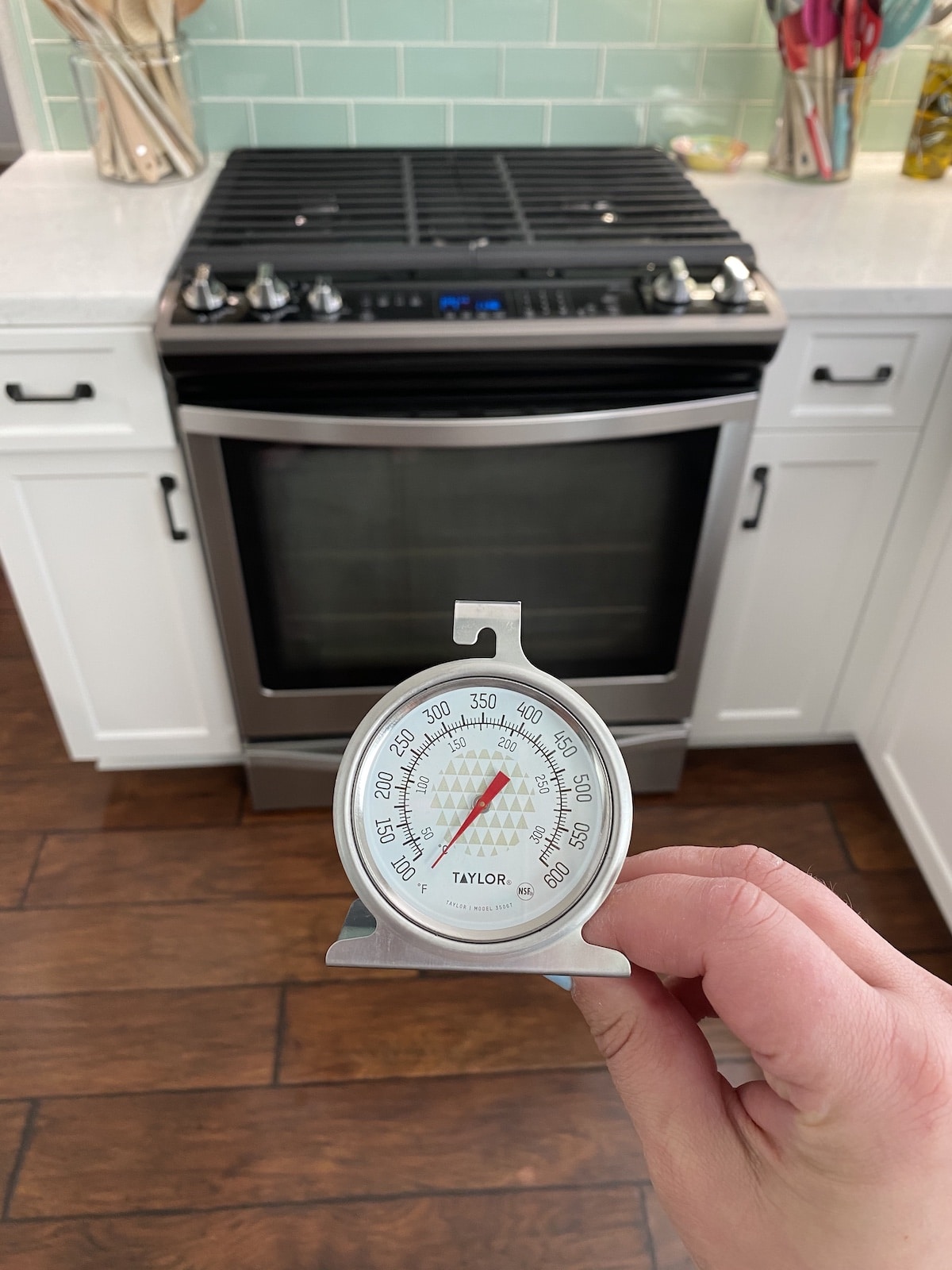
1. Get an Oven Thermometer
Yes, you need one. Did you know that ovens can vary put to 90° from the temperature setting? That is a HUGE difference – and a big deal when you’re baking. Without an oven thermometer you never really know if 350° is really 350° in your oven. Oven thermometers are cheap and easy to use – you just hang them in your oven.
Make sure you place it in the right spot. My sweet spot is mid-middle rack on the left or right. If you place it somewhere and the reading is wrong, move it around to double check it’s in the right spot.
2. Always Preheat – for long enough!
I’m guilty of this: popping food into an oven that’s only been on 15 minutes. For some ovens, that’s all it might take to preheat. But some take up to 30 minutes to get to the right temperature. You can’t rely on the oven beeps to tell you either – which is why it’s important to have an oven thermometer (see #1). Never pop cookies in the oven to bake when the oven isn’t preheated.
3. Know the type of oven you have
Is it Gas, Electric, or Convection?
Gas and electric ovens heat differently. Gas ovens usually heat from the bottom with the broiler at the top, while electric ovens heat from the bottom and have a heating element at the top that turns off and on. Both gas and electric ovens often come with convection, which uses a fan to circulate the heat, baking things faster.
All recipes tested on this blog use a traditional electric oven, not the convection setting.
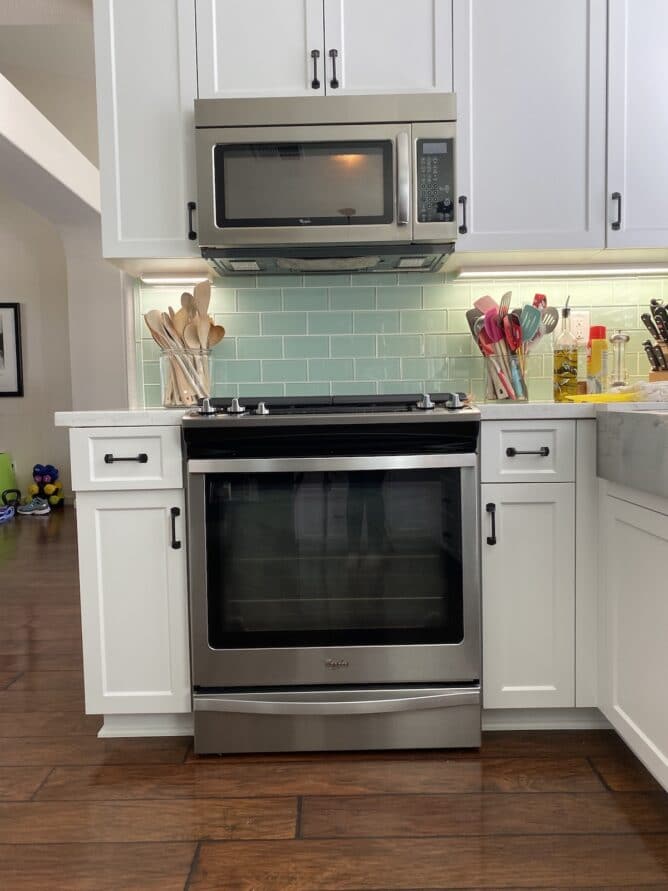
4. Know how your oven bakes
Over time of using your oven, start to note the differences of how things bake and use that information to change up how you’re baking:
- Does the back always get darker faster? My old oven used to do this, so I’d have to rotate the pans 180° during baking.
- Does the bottom brown faster? Often this happens when you’re baking two cookie sheets or pans at once – the bottom one cooks faster (and the bottoms brown faster) because it’s closer to the heating element. You can combat this by rotating the pans top and bottom during baking or just bake one pan at a time in the middle.
- Do you have a double oven range (with the small oven on top and big on bottom)? If so, you’re going to have differences if you bake in that small oven vs the big one because of the surface area. Plus: your larger oven will even bake differently than my one huge open range oven. Suface area matters!
5. Every oven bakes different
I always give a range of bake times because of this. Every oven heats and bakes differently which will affect baking time.
- If your oven runs hotter, things might brown faster and be under done in the middle. Lower the oven temperature to offset.
- If your oven runs cooler, it might need longer to bake.
- If you have issues in #4, then some things might bake faster…and so on.
Not everything is going to bake at the same time as my oven. Brands, age, capacity – all these things affect outcome.
6. Rack placement affects outcome
If you bake one cookie sheet in the center of your oven, you’re going to get a more even bake than if you bake 3 cookie sheets. (Same goes if your cookie sheet has 6 cookies on it vs 12, etc.)
Middle rack, top, bottom – all will bake differently. For best results, bake on the middle rack only. At most, place 2 cookie sheets or 2 pans on 2 racks right as in center as possible.
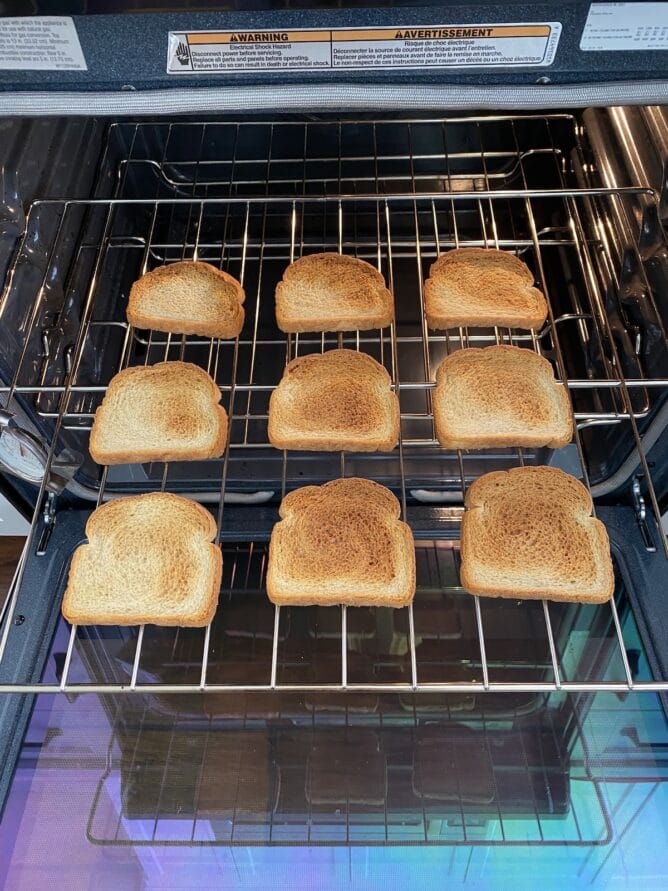
7. How to test your oven for hot spots using Bread
Preheat your oven to 350° and wait until it’s preheated.
Carefully place 6-9 slices of white bread on the middle rack of your oven, evenly spaced.
Bake the bread until it’s toasted, checking after 5, 10, 15, and 20 minutes. Note the following:
- Which pieces get done faster? These are the hot spots in your oven.
- Which pieces are more evenly browned? This shows where air is more consistent.
- Which pieces are the lightest? These are cooler spots.
Now you know how your oven will bake and you can easily adjust your placement for success.
8. Be sure to clean your oven!
Yes – a dirty oven can affect baking too. Be sure to run the cleaning cycle occasionally, especially if something drips onto the bottom. If you notice a burning smell while you’re baking it’s probably because something spilled – and that burned taste will infuse into what you’re baking.
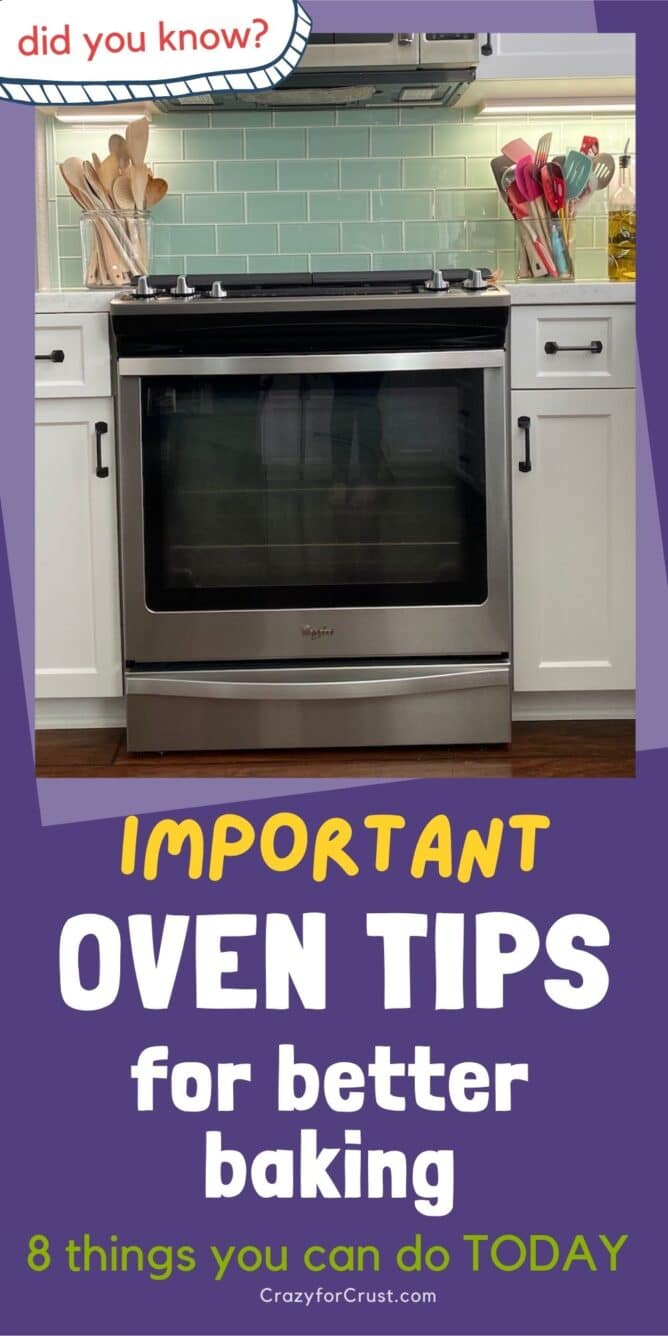
Important Oven Tips for Better Baking – 8 things you can do today including learning how to do the bread test to test your oven for hot spots!
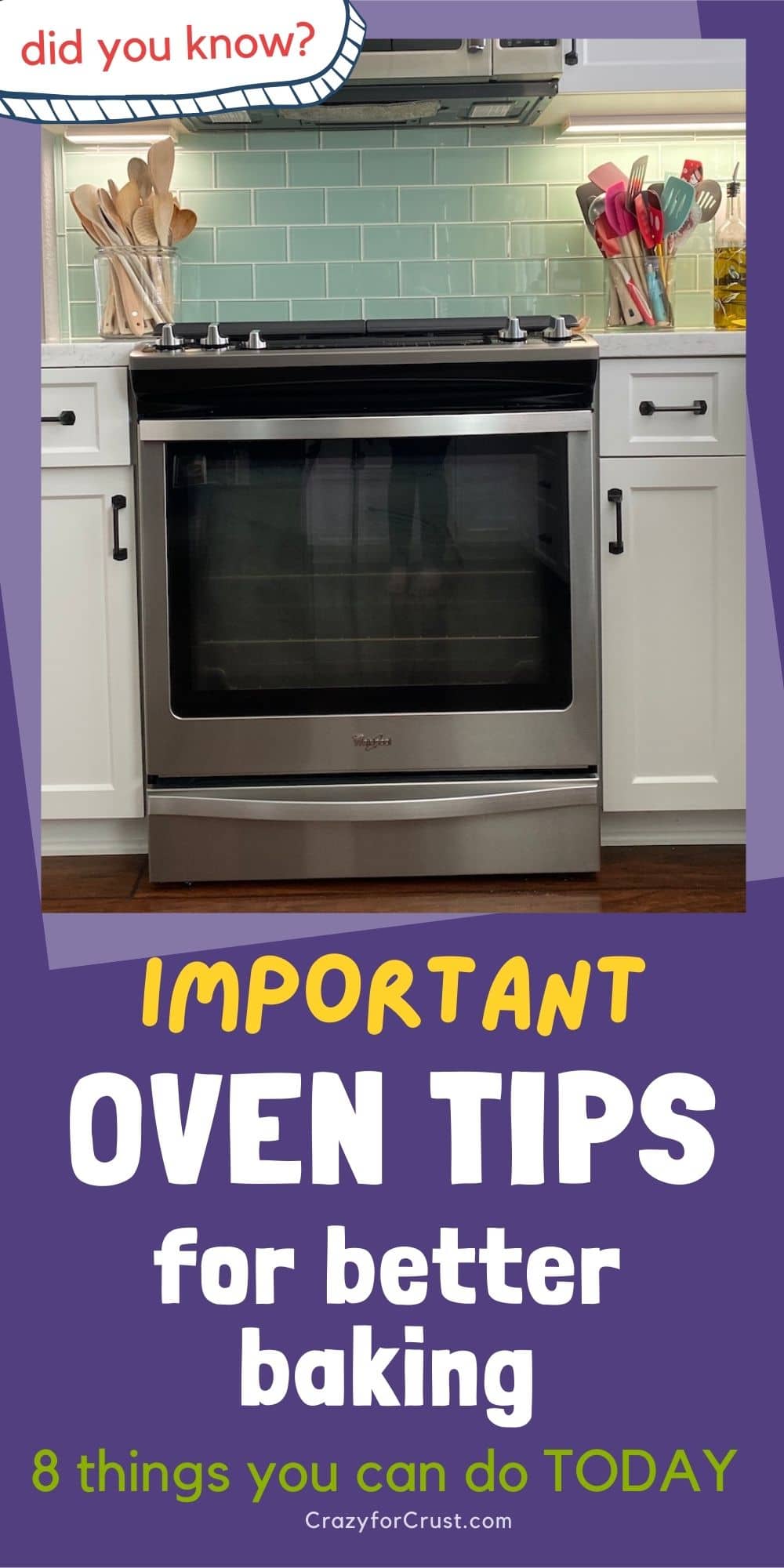
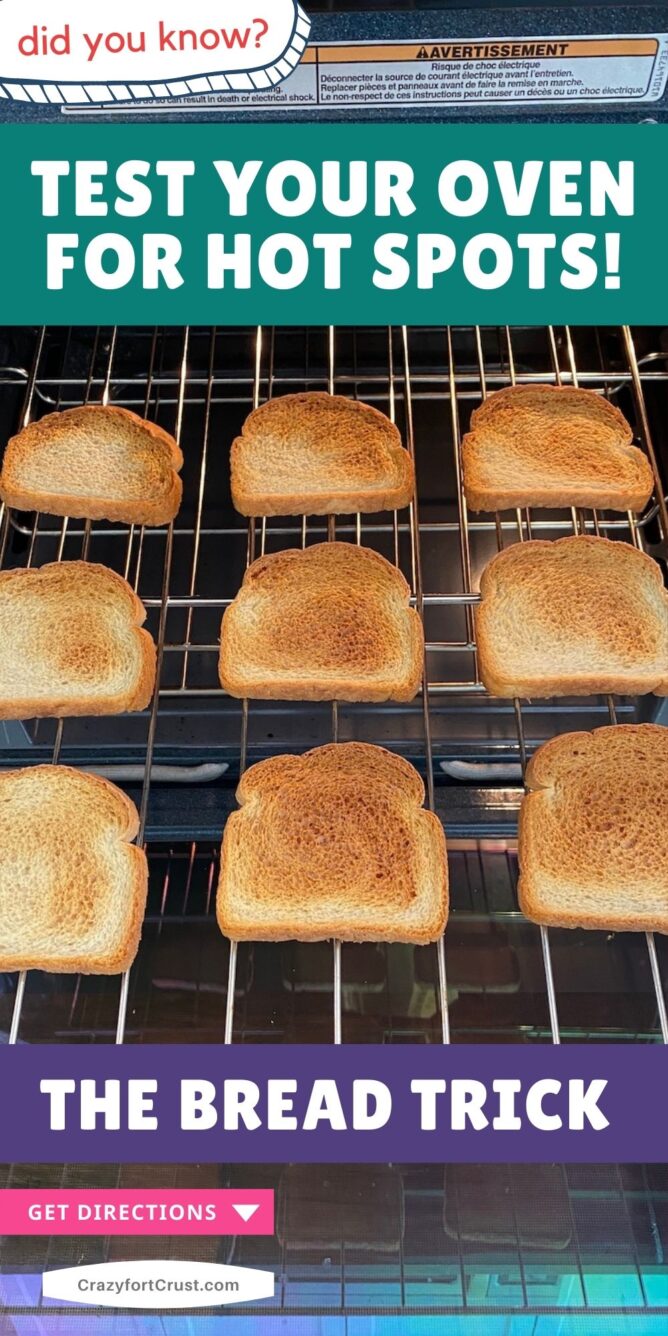
Happy birthday Dorothy and all the best to you for many years to come
I just started baking cookies, pies, and everything else sweet at Christmas last year. Prior to that all I ever made was breakfast!!!
Lol
You have such a wonderful source of baking tips and I must brag a bit that folks love my desserts
Take care
Neil
Great tips! I always use an oven thermometer now because the temp has varied so much since I bought it. Thank you, this post is very helpful.
Featured In